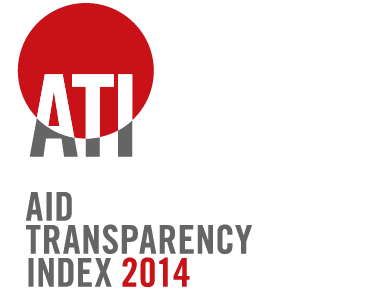Further Findings – #06.
Forward budgets
Back to OverviewRecipient country governments have repeatedly stressed the need for projections of forward spending from providers for planning purposes. A 2013 survey of the needs of Aid Information Management Systems found that 91% of those managing aid flows in partner countries classed the provision of at least one year forward-looking budgets to be critical. The findings of the 2014 ATI show that the information on forward budgets is still patchy, limited in scope and published in hard-to-access formats, meaning that there is still a long way to go before partner country needs for forward-looking information are met.
What is published? Of the 68 organisations includes in the 2014 ATI:
- 54 publish some forward-looking information on the total amount that the organisation will be allocated by its government or funders (indicator 9)
- 40 provide forward-looking information on the amounts they will spend on different countries, programmes and institutions per year (indicator 10)
- 26 publish forward-looking budgets, broken down by annual or quarterly chunks, for specific activities level budgets (indicator 33)
These figures are little changed from 2013. Four more organisations are publishing total organisation budgets but the number of recipient country budgets published has remained the same.
Who is publishing? Donors such as the AsDB, AfDB, Canada, UNICEF and UNDP follow best practice and score the maximum possible points for both total and recipient country budgets. However, total organisation budgets are not published by some major donors including: France (AFD), Italy, Japan (MOFA) and the Gates Foundation. Meanwhile some donors with smaller cooperation budgets have published this information (Romania, Slovakia and Slovenia for example). This trend is repeated for recipient country budgets: France, Japan, Norway, Germany (AA) do not publish, but Czech Republic, Poland and Latvia do. Size of cooperation budget does not seem to be much of a determining factor.
Format. There has been some progress towards publishing budgets in more accessible formats but a lot of work remains to be done. While the number of forward budgets published in IATI has doubled since 2013, this number is still relatively small – 21 publish total organisation budgets, 17 publish recipient country budgets and 15 publish activity-level budgets in IATI. Half of the total organisation budgets published are still buried in hard-to-access PDF documents.
Scope. The scope of budgets is limited too. Only half of the total organisation and recipient country budgets published are forward looking by three years. The other half are either provided as aggregate budgets or lump sum amounts for several years or only go one or two years forward. Worse still, 14 donors still publish no total organisation budget and 28 publish no recipient country budgets.
Overall, the 2014 ATI findings show that many donors are still failing to meet the commitments they made to ‘provide available, regular, timely rolling three to five year indicative forward expenditure and/or implementation plans’ at both the Accra and Busan High Level Forums on Aid Effectiveness (see here).
